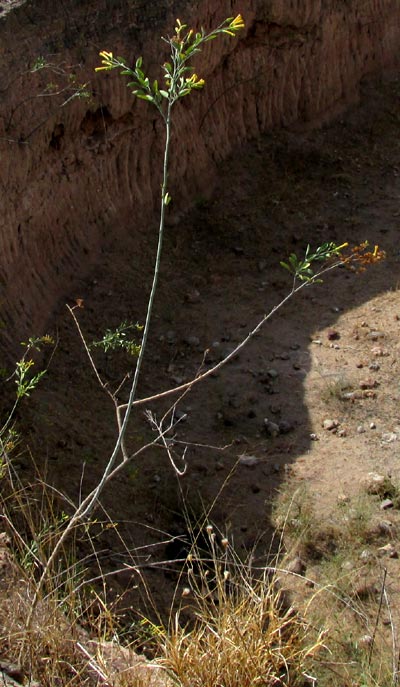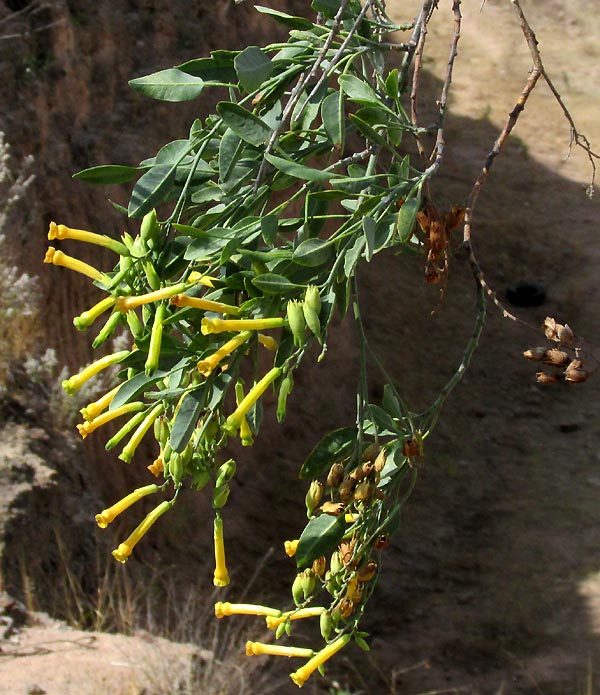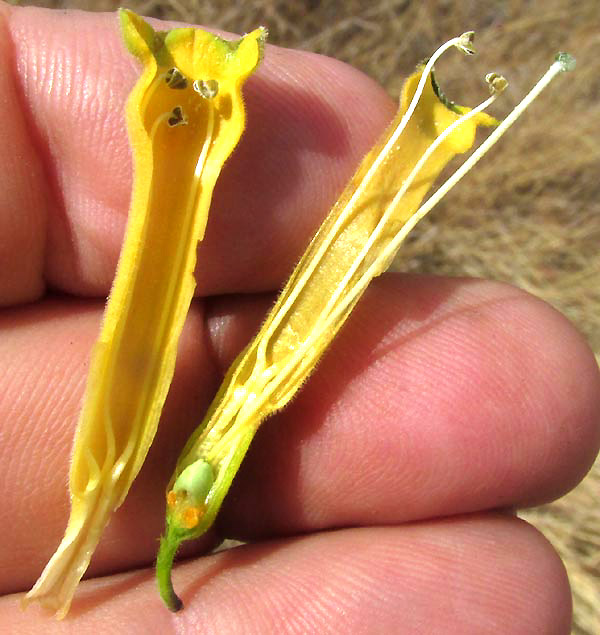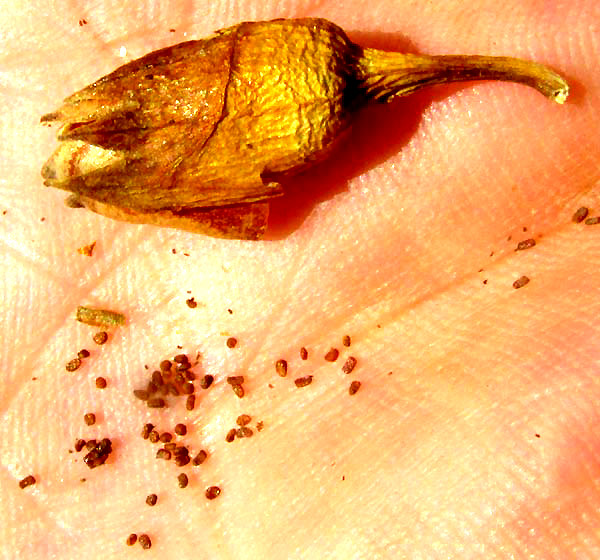Excerpts from Jim Conrad's
Naturalist Newsletter
entry dated April 2, 2022, issued from near Tequisquiapan, elevation about 1,900m (6200 ft), ~N20.57°, ~ W99.89°, Querétaro state, MÉXICO
TREE TOBACCO

When I arrived here a North American friend was showing me around when we passed the soft-woody, scraggly bush at the right. It's growing from the side of a pit where local people remove fill-dirt. My friend, interested in wild edible herbs, described how he'd nibbled on this plant's leaves, liked the taste, and apparently nibbled too much, because soon he became dizzy and very sick to his stomach.
That's not a surprise, and the local folks know better than to eat this very common, weedy plant's leaves. They call it Tabachín, while English Speakers name it Tree Tobacco. It made my friend sick because Tree Tobacco is very closely related to cultivated Tobacco -- both being members of the Nightshade Family, the Solanaceae, and the genus Nicotiana, which is the Tobacco genus. It's NICOTIANA GLAUCA, and just like cultivated Tobacco, it contains plenty of toxic nicotine.

As seen above, like cultivated Tobacco, Tree Tobacco produces long, tubular flowers, and capsular fruits. However, cultivated Tobacco's flowers are white and rose color, while Tree Tobacco's are yellow. Below you can see that, also like Tobacco flowers, Tree Tobacco's blossoms produce 5 long stamens of slightly different lengths, and a slender style reaching to the corolla tube's mouth.

Also like Tobacco, Tree Tobacco's fruit pods open up to release prodigious numbers of very small seeds, shown below:

Tree Tobacco is thought to be native to Argentina, but now it's invasive all through world's warmer areas. One reason it may have become so widespread is that its leaves can be smoked as a stimulant. In the Mediterranean region and Iraq, it's sometimes cultivated for that purpose.
Medicinally its leaves have been mashed into a pulp to apply as a poultice to reduce pain and swellings, and treat bruises, cuts, boils, sores, inflamed throat and swollen glands. It must be used carefully, though, because taking too much into the body can be lethal both to humans and livestock.